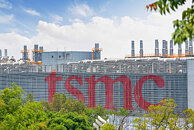T0@st
News Editor
- Joined
- Mar 7, 2023
- Messages
- 2,894 (3.78/day)
- Location
- South East, UK
| System Name | The TPU Typewriter |
|---|---|
| Processor | AMD Ryzen 5 5600 (non-X) |
| Motherboard | GIGABYTE B550M DS3H Micro ATX |
| Cooling | DeepCool AS500 |
| Memory | Kingston Fury Renegade RGB 32 GB (2 x 16 GB) DDR4-3600 CL16 |
| Video Card(s) | PowerColor Radeon RX 7800 XT 16 GB Hellhound OC |
| Storage | Samsung 980 Pro 1 TB M.2-2280 PCIe 4.0 X4 NVME SSD |
| Display(s) | Lenovo Legion Y27q-20 27" QHD IPS monitor |
| Case | GameMax Spark M-ATX (re-badged Jonsbo D30) |
| Audio Device(s) | FiiO K7 Desktop DAC/Amp + Philips Fidelio X3 headphones, or ARTTI T10 Planar IEMs |
| Power Supply | ADATA XPG CORE Reactor 650 W 80+ Gold ATX |
| Mouse | Roccat Kone Pro Air |
| Keyboard | Cooler Master MasterKeys Pro L |
| Software | Windows 10 64-bit Home Edition |
TSMC's Japanese facilities are set to fabricate "mature-technology chips" (28 nm and 22 nm) once construction at the site concludes next year—this $8.6 billion fab on Kyushu Island is proving to be a promising prospect for company leadership back in Taiwan. A Reuters report suggests that more ambitious plans are afoot for Japan as a key production base—two anonymous insiders claim that problems encountered at the Arizona plant have caused a shift in focus onto other global TSMC sites.
There is potential for further expansion and upgrades in Kikuyo, Kumamoto Prefecture—TSMC has reportedly taken an "increasingly optimistic view" of Japan's work culture, relatively cheap-to-build facility and a co-operative government. A smooth ramp-up of the first fabrication facility is the primary goal in 2024, but adjusted plans could add more capacity. The insiders think that a second site is also a possibility, with consideration for more advanced chip making.


View at TechPowerUp Main Site | Source
There is potential for further expansion and upgrades in Kikuyo, Kumamoto Prefecture—TSMC has reportedly taken an "increasingly optimistic view" of Japan's work culture, relatively cheap-to-build facility and a co-operative government. A smooth ramp-up of the first fabrication facility is the primary goal in 2024, but adjusted plans could add more capacity. The insiders think that a second site is also a possibility, with consideration for more advanced chip making.


View at TechPowerUp Main Site | Source


